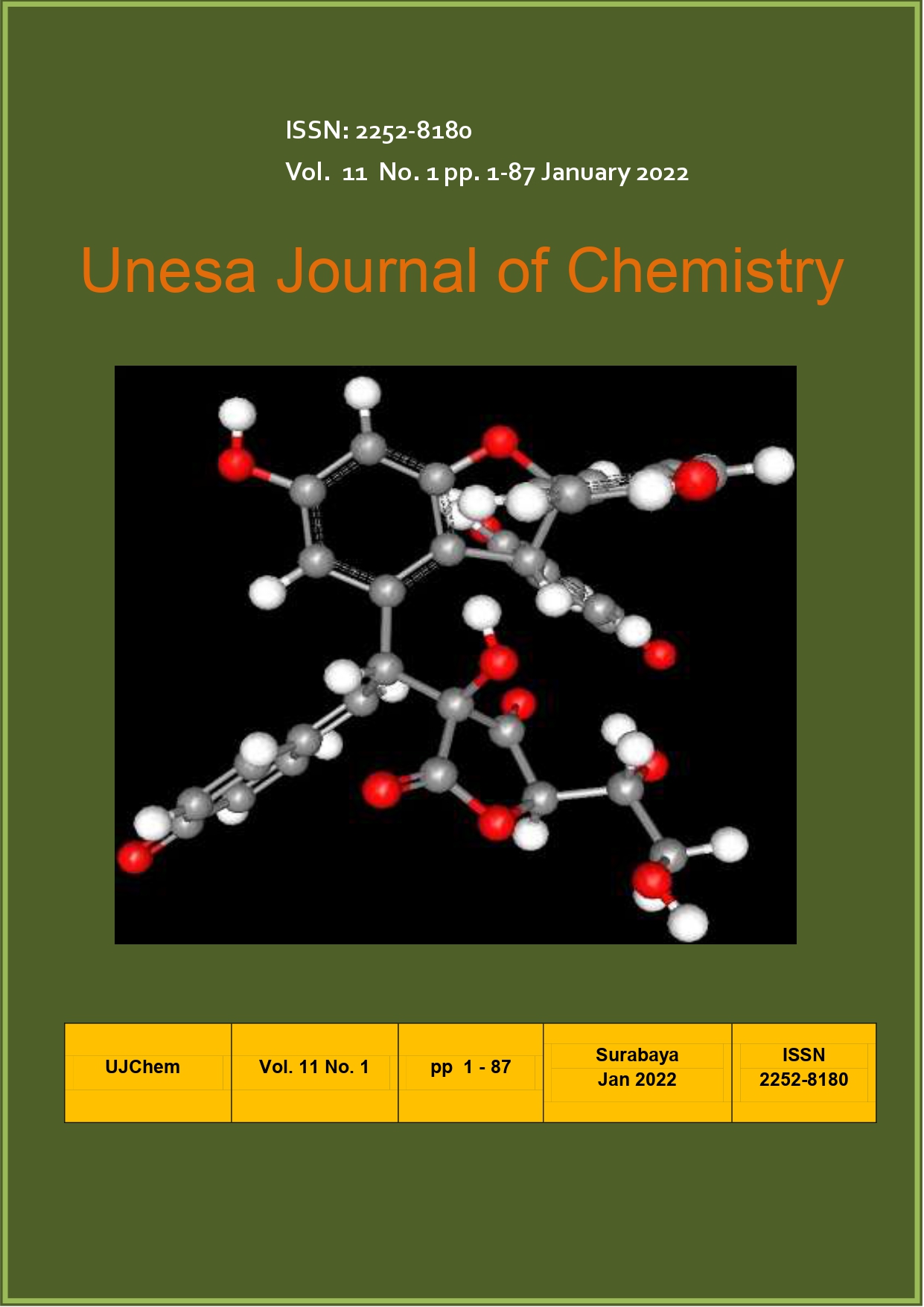THE EFFECT OF CROSSLINKER AMOUNT ON THE SYNTHESIS OF MOLECULARLY IMPRINTED POLYMER (MIP) TOWARD ADSORPTION CAPABILITY OF CLORAMPHENICOL
Main Article Content
Downloads
Download data is not yet available.
Article Details
How to Cite
Sianita, M. M., & Butar, M. B. (2022). THE EFFECT OF CROSSLINKER AMOUNT ON THE SYNTHESIS OF MOLECULARLY IMPRINTED POLYMER (MIP) TOWARD ADSORPTION CAPABILITY OF CLORAMPHENICOL. Unesa Journal of Chemistry, 11(1), 18–25. https://doi.org/10.26740/ujc.v11n1.p18-25
Issue
Section
Articles

